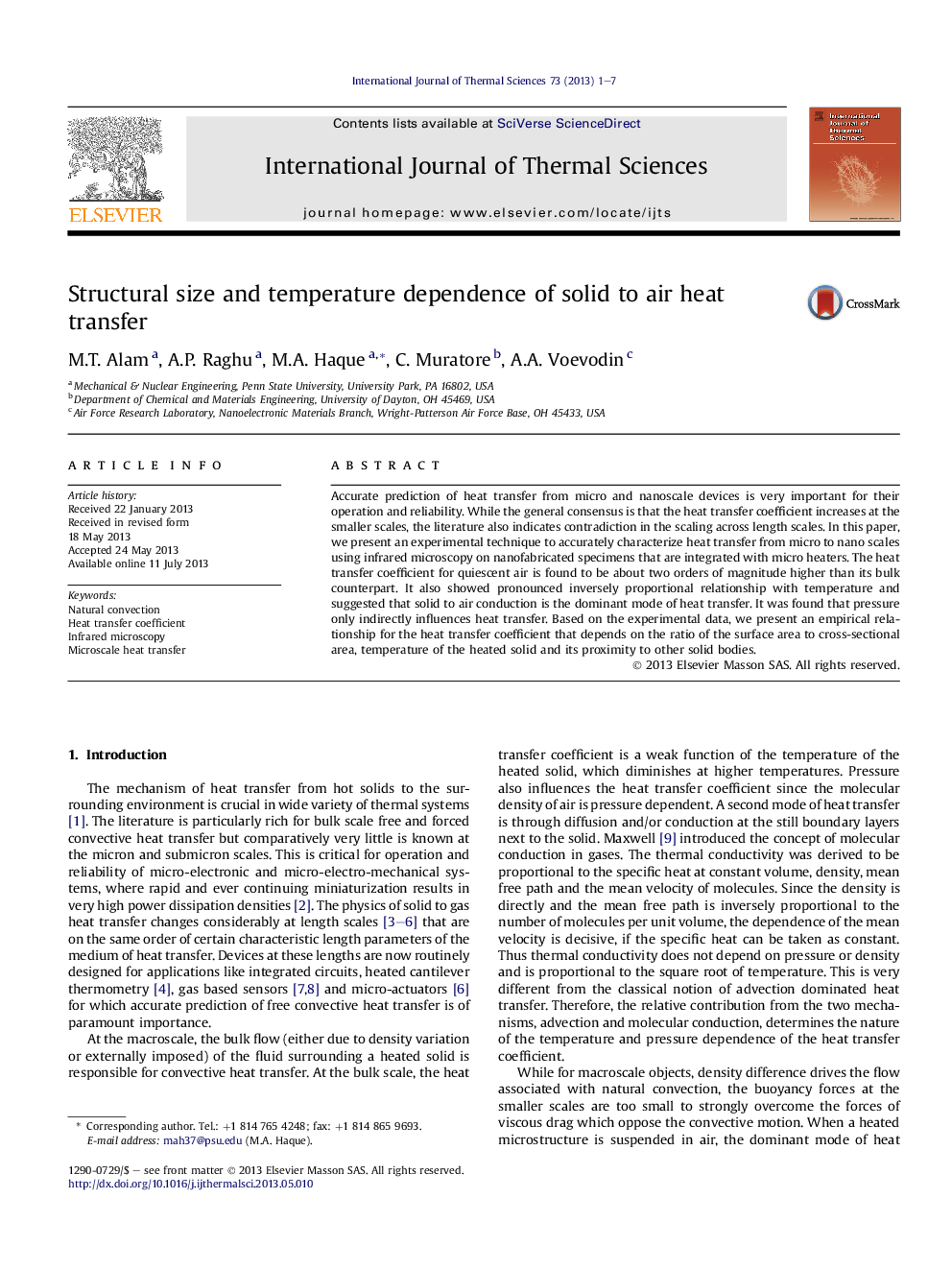| کد مقاله | کد نشریه | سال انتشار | مقاله انگلیسی | نسخه تمام متن |
|---|---|---|---|---|
| 669647 | 1458749 | 2013 | 7 صفحه PDF | دانلود رایگان |

• Infrared-based setup was used to measure microscale solid to air heat transfer.
• Measured heat transfer coefficient was ∼100 times higher than bulk value.
• Heat transfer was observed to be strongly influenced by temperature of the solid.
• Heat conduction through air, and not convection, was the dominant mechanism.
• An empirical expression for size dependent heat transfer is proposed and validated.
Accurate prediction of heat transfer from micro and nanoscale devices is very important for their operation and reliability. While the general consensus is that the heat transfer coefficient increases at the smaller scales, the literature also indicates contradiction in the scaling across length scales. In this paper, we present an experimental technique to accurately characterize heat transfer from micro to nano scales using infrared microscopy on nanofabricated specimens that are integrated with micro heaters. The heat transfer coefficient for quiescent air is found to be about two orders of magnitude higher than its bulk counterpart. It also showed pronounced inversely proportional relationship with temperature and suggested that solid to air conduction is the dominant mode of heat transfer. It was found that pressure only indirectly influences heat transfer. Based on the experimental data, we present an empirical relationship for the heat transfer coefficient that depends on the ratio of the surface area to cross-sectional area, temperature of the heated solid and its proximity to other solid bodies.
We measured heat transfer from microscale objects to quiescent air using infrared microscopy on nanofabricated specimens. The heat transfer coefficient is found to be about two orders of magnitude higher than the bulk value (5–15 W/m K) and a strong function of temperature.Figure optionsDownload as PowerPoint slide
Journal: International Journal of Thermal Sciences - Volume 73, November 2013, Pages 1–7